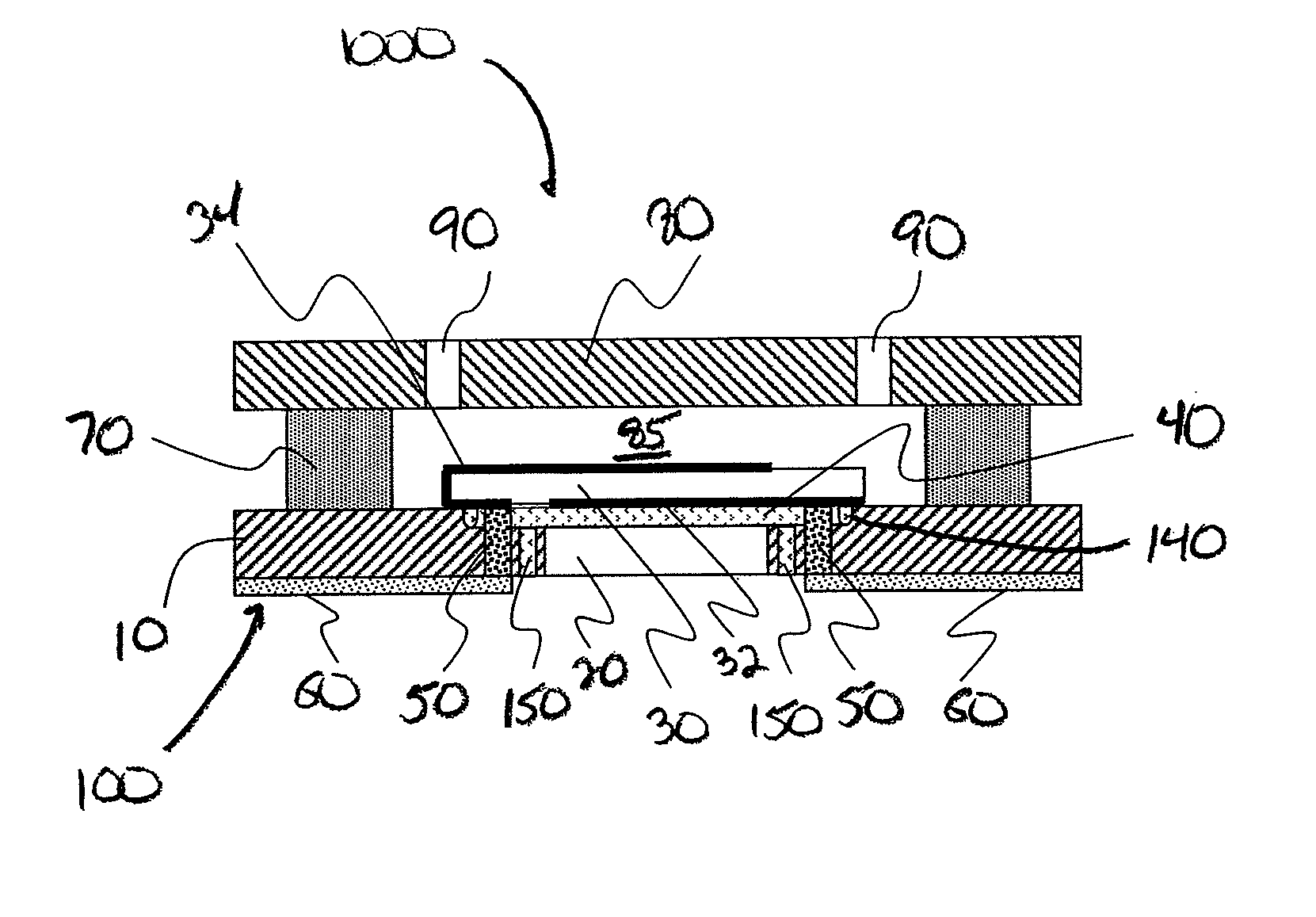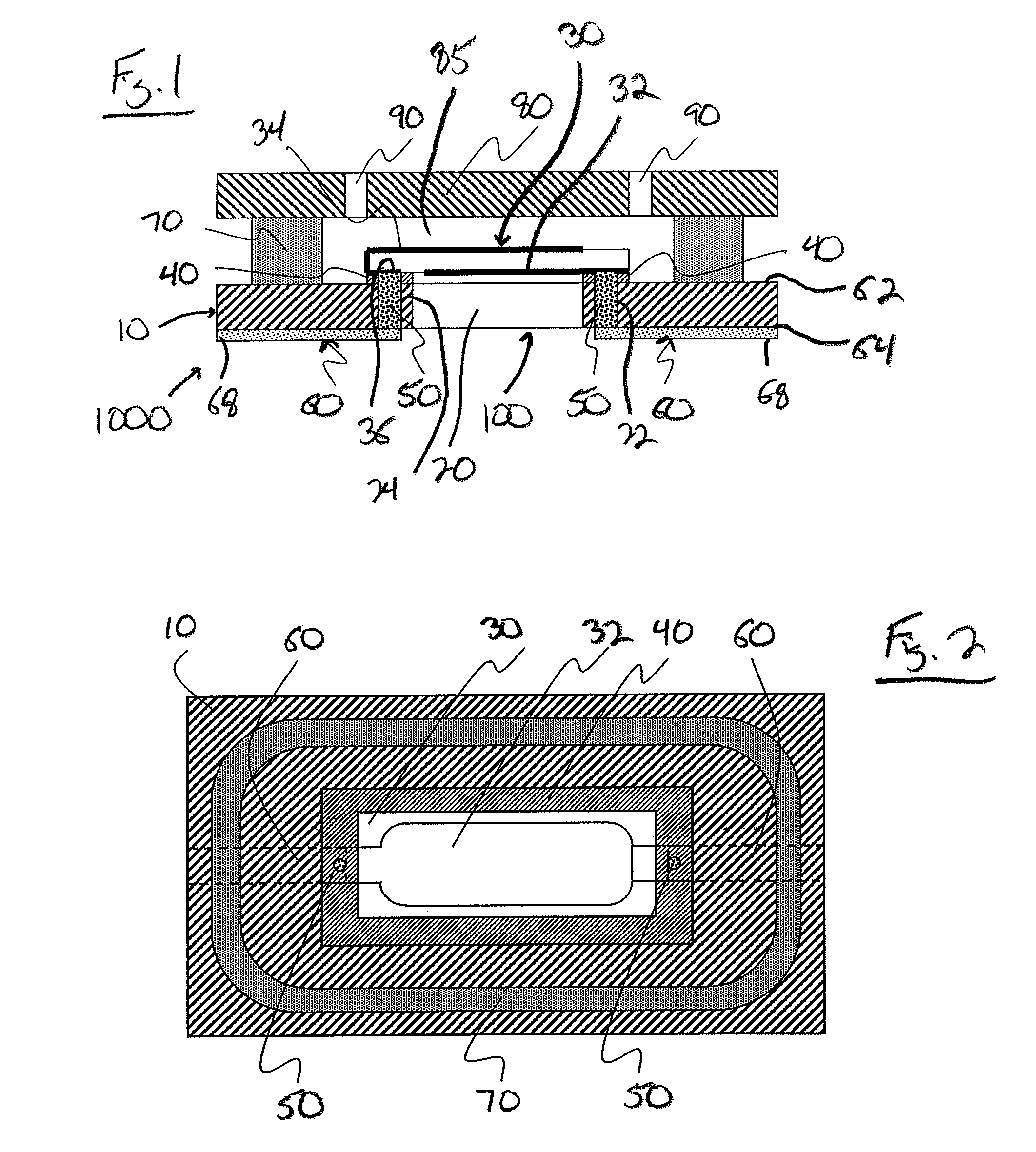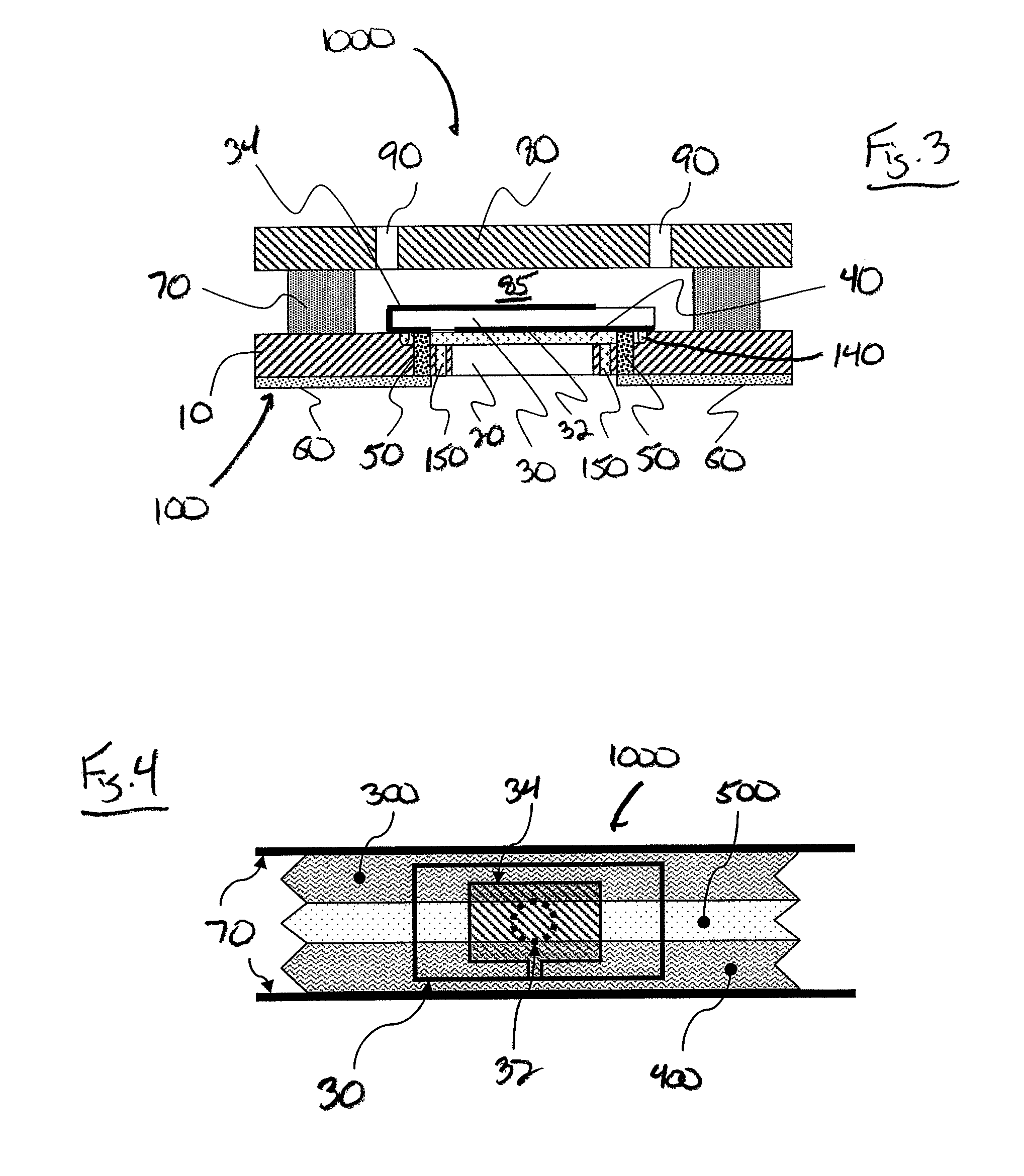Oscillating sensor and fluid sample analysis using an oscillating sensor
a technology of oscillating sensors and sensors, which is applied in the field of new sensor assembly and fluid sample testing method of the sensor, can solve the problems of friction between the sensor and the resonator, direct impact on the sensitivity of the resonator, damage to the fragile quartz plate, etc., and achieves the effect of effectively isolating the resonator, preventing any dampening of the vibration within the resonator, and enhancing the reproducibility of the vibration
- Summary
- Abstract
- Description
- Claims
- Application Information
AI Technical Summary
Benefits of technology
Problems solved by technology
Method used
Image
Examples
Embodiment Construction
[0022]With reference now to the drawing figures in which like reference numerals represent like parts throughout the disclosure, a sensor assembly constructed according to the present invention is illustrated generally at 100 in FIG. 1. In one embodiment for the assembly shown in FIG. 1, the assembly 100 is a dry side sensor mounting assembly for a single sensing spot crystal resonator 30 assembled into a sample delivery flow cell 1000. The assembly 100 is formed with a substrate 10 of a fluid-impervious and non-conductive material that includes a central bore 20 and a pair of electrode contact bores 22, 24 disposed on opposite sides of the central bore 20, though the bores 22, 24 can be located in any suitable location around the bore 20. Additionally, the central bore 20 and the bores 22, 24 are shaped as desired to accommodate the particular structure of the assembly 100, and therefore can have any desired shape.
[0023]An oscillating crystal resonator 30 formed of a conventional q...
PUM
| Property | Measurement | Unit |
|---|---|---|
| adhesive | aaaaa | aaaaa |
| conductor | aaaaa | aaaaa |
| hydrostatic pressure | aaaaa | aaaaa |
Abstract
Description
Claims
Application Information
 Login to View More
Login to View More - R&D
- Intellectual Property
- Life Sciences
- Materials
- Tech Scout
- Unparalleled Data Quality
- Higher Quality Content
- 60% Fewer Hallucinations
Browse by: Latest US Patents, China's latest patents, Technical Efficacy Thesaurus, Application Domain, Technology Topic, Popular Technical Reports.
© 2025 PatSnap. All rights reserved.Legal|Privacy policy|Modern Slavery Act Transparency Statement|Sitemap|About US| Contact US: help@patsnap.com



